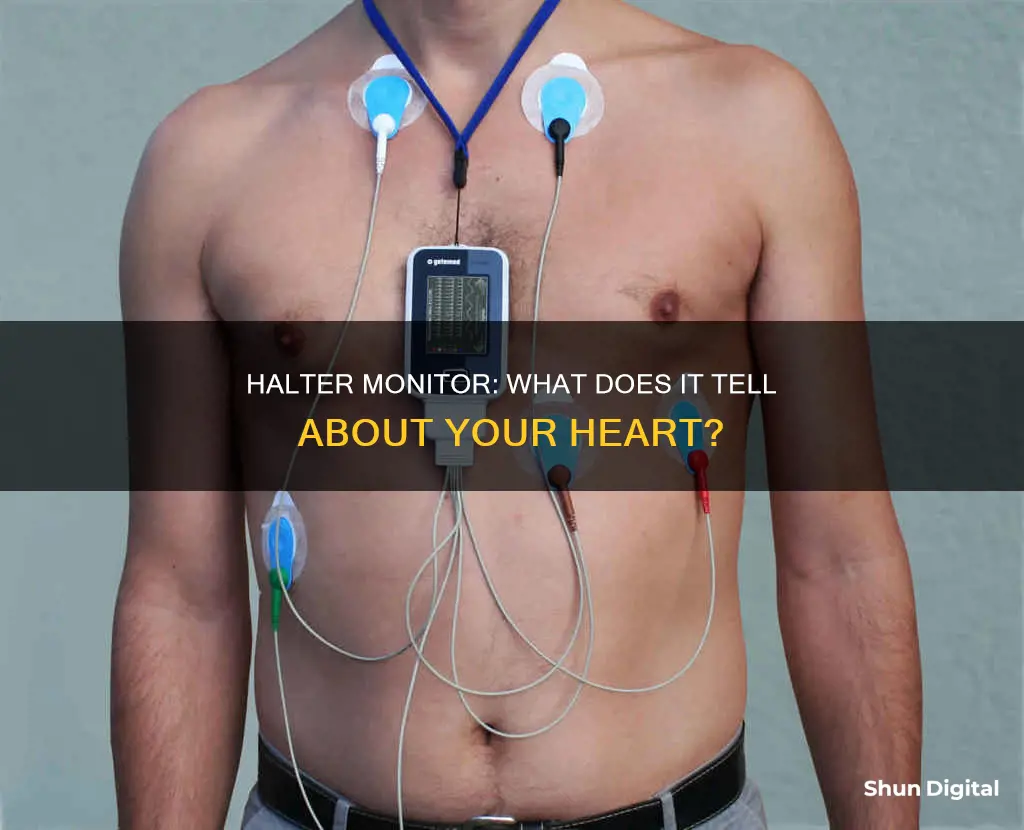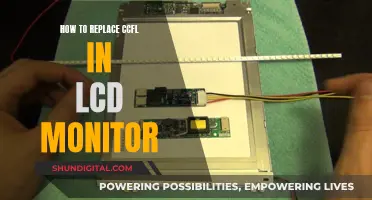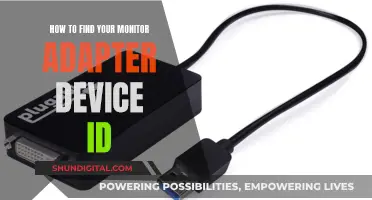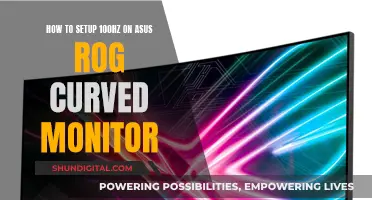
A Holter monitor is a portable electrocardiogram (ECG) device that records the electrical activity of the heart over 24 to 48 hours while the wearer goes about their daily life. It is a small, battery-operated device, about the size of a cellphone, that is worn on a strap around the neck, shoulder, or waist. The Holter monitor is used to detect abnormal heart rhythms, such as arrhythmias, and to evaluate symptoms such as dizziness, fainting, and chest pain. The device is easy to use, with no associated risks or pain, and allows healthcare providers to monitor the heart's activity over a prolonged period, increasing the chances of detecting any cardiac arrhythmias.
| Characteristics | Values |
|---|---|
| Purpose | To analyse the electrical activity of the heart outside of the clinical setting, as a person goes about their normal daily activities |
| Duration | 24 to 48 hours or longer |
| Placement | Worn around the shoulder, neck, or waist |
| Size | Small, about the size of a cellphone or a small camera |
| Power Source | Battery-operated |
| Components | Wires and electrodes (small patches) that stick to the skin |
| Recording | Continuously records the heart's rhythms and electrical activity |
| Diary | Patients are instructed to keep a diary of their activities and symptoms during the test period |
| Results | Detects infrequent or fleeting cardiac arrhythmias; results are typically available within one to two weeks |
What You'll Learn
- A halter monitor can detect cardiac arrhythmias or heart rhythm abnormalities
- It can help determine if your medicines are working
- It can be used to see if your heart is getting enough oxygen to meet its needs
- It can be used to assess your risk for future heart-related events in certain conditions
- It can be used to evaluate symptoms that may be heart-rhythm related

A halter monitor can detect cardiac arrhythmias or heart rhythm abnormalities
A halter monitor is often used when a standard electrocardiogram (ECG or EKG) does not provide clear results. An ECG only records the heart for a short period, whereas a halter monitor can record the heart's activity for a full day or two, providing more opportunities to detect unusual activity. It can be used to evaluate symptoms that may be heart-rhythm-related, such as chest pain, tiredness, shortness of breath, dizziness, or fainting.
During the halter monitor test, the technician will attach the electrodes to your chest and help you put on the monitor, connecting it to the electrodes. You can then carry the monitor in a pocket or bag, or wear it on a strap. You can continue your regular daily activities, but you may be asked to keep a diary of your activities and symptoms during the test. This diary will be compared to the changes in your ECG recorded by the halter monitor.
After the test period, you will return the monitor to the technician for processing. The technician will prepare a report for your healthcare provider, who will discuss the results and any necessary next steps with you. The results may show a heart rhythm disorder (arrhythmia) such as atrial fibrillation or premature ventricular contractions (PVCs), which can help guide further treatment or medication decisions.
Troubleshooting Slow ASUS Monitor Startup
You may want to see also

It can help determine if your medicines are working
A Holter monitor is a type of heart monitor that records your heart's activity over 24 to 48 hours. It is a wearable device and a type of ambulatory electrocardiogram that records your heart's rhythm and rate activity. It gives your healthcare provider a full picture of what your heart rhythm and rate are doing as you go about your daily life.
A Holter monitor can be used to determine if your medicines are working. This is particularly useful when starting a new heart medicine. The monitor can be used to assess how the heart responds to normal activity, including exercise, and to diagnose heart rhythm problems that may be causing symptoms such as palpitations or syncope (passing out/fainting).
The monitor can also be used to determine if your heart is getting enough oxygen to meet its needs. This is important as some changes in the heart's rhythm may mean that the heart is not getting enough oxygen. By wearing a Holter monitor, your healthcare provider can assess whether your medicines are effectively treating any heart rhythm problems and ensuring your heart is receiving adequate oxygen.
Additionally, a Holter monitor can help identify if you have any irregular heartbeats or palpitations. This information can be used in conjunction with your medication regimen to determine if adjustments are necessary to improve your heart health and ensure the effectiveness of your treatment.
Overall, a Holter monitor is a valuable tool for evaluating the effectiveness of medications for individuals with heart-related concerns. It provides a comprehensive view of the heart's activity during daily life, allowing healthcare providers to make informed decisions about the impact of medications on an individual's heart health.
LCD Backlight: Built-In or Separate?
You may want to see also

It can be used to see if your heart is getting enough oxygen to meet its needs
A Holter monitor is a type of heart monitor that records your heart's activity over 24 or 48 hours. It is a wearable device and a type of ambulatory electrocardiogram (ECG) that records your heart's rhythm and rate activity. It gives your provider a full picture of what your heart rhythm and rate are doing as you go about your daily life.
The Holter monitor can be used to see if your heart is getting enough oxygen to meet its needs. It does so by recording your heart's electrical activity for 24 to 48 hours while you engage in your regular daily activities. This allows the monitor to capture any abnormal heart activity that may be causing symptoms such as dizziness or fainting.
The monitor can detect infrequent or fleeting cardiac arrhythmias, which are abnormal heart rhythms that may occur only infrequently and completely unpredictably. These arrhythmias may be present for only brief periods, and a standard ECG, which records the heart rhythm for only 12 seconds, may not capture them. By recording each heartbeat over a prolonged period, the Holter monitor significantly increases the chances of detecting these transient arrhythmias.
In addition, the Holter monitor can help evaluate symptoms that may be related to heart rhythm problems, such as chest pain, tiredness, shortness of breath, dizziness, or fainting. It can also identify irregular heartbeats or palpitations and assess your risk for future heart-related events in certain conditions, such as thickened heart walls (hypertrophic cardiomyopathy) or Wolff-Parkinson-White syndrome.
The Holter monitor is named after Dr. Norman J. Holter, who invented it in the 1950s. It is a safe and painless procedure with minimal risks, which mainly include mild skin irritation from the electrodes.
Monitoring Internet Usage: Free LAN Solutions
You may want to see also

It can be used to assess your risk for future heart-related events in certain conditions
A Holter monitor can be used to assess your risk of future heart-related events in certain conditions. This is because the monitor can identify abnormal heart rhythms and heart symptoms that may come and go. It can also help determine how the heart responds to normal activity.
For example, a Holter monitor can be used to assess your risk of future heart-related events if you have thickened heart walls (hypertrophic cardiomyopathy) after a heart attack that caused weakness on the left side of your heart. This is known as Wolff-Parkinson-White syndrome, where an abnormal electrical conduction pathway exists in the heart.
Additionally, a Holter monitor can be used to assess your risk if you are experiencing symptoms such as dizziness, fainting, and low blood pressure, or ongoing tiredness and palpitations. It can also be used if your resting ECG shows a problem but more information is needed.
The monitor can also be used to assess your risk of future heart-related events by helping to determine how well your heart is getting oxygen, how well your heart medications are working, and how well your pacemaker is working.
Overclocking Asus Monitors: Safe or Risky Business?
You may want to see also

It can be used to evaluate symptoms that may be heart-rhythm related
A Holter monitor is a battery-operated portable electrocardiogram (ECG) device that measures and records your heart's activity for 24 to 48 hours or longer while you go about your normal daily activities. It can be used to evaluate symptoms that may be heart-rhythm related.
The monitor is the size of a small camera on a strap worn around the shoulder, neck, or waist. It has wires with small discs (electrodes) that attach to your skin to record the ECG continuously. The electrodes are small, round, sticky patches that are attached to your chest. If you have a hairy chest, you may need to have some of the hair shaved off to attach the electrodes firmly.
You can carry the monitor in a pocket or pouch, slung across your shoulders and neck like a purse or camera, or attached to your waist. You can do your usual activities while wearing the monitor, but you should avoid bathing, showering, or swimming, as the monitor must be kept dry. You should also avoid going near high-voltage areas, metal detectors, or large magnets.
While wearing the Holter monitor, you will be instructed to keep a diary of your activities and symptoms. If you experience symptoms such as chest pain, shortness of breath, dizziness, or palpitations, you should note the time of day they began and what you were doing. Your healthcare provider will compare these notes with the changes in your ECG recorded by the Holter monitor to evaluate any symptoms that may be related to heart-rhythm problems.
A Holter monitor can be particularly useful for evaluating symptoms that may be related to heart-rhythm issues because it provides a continuous recording of your heart's activity over an extended period. This increases the likelihood of capturing any abnormal heart rhythms or fleeting arrhythmias that may be causing your symptoms.
Protective Monitor Wrap: Choosing the Right Size for Your Screen
You may want to see also
Frequently asked questions
A Holter monitor is a type of portable electrocardiogram (ECG) that records the electrical activity of the heart over 24 hours or longer while you are away from your healthcare provider's office.
You may need a Holter monitor if you have an inconclusive electrocardiogram (ECG or EKG), a type of heart test. An inconclusive EKG means it didn’t provide clear results. You may have seen your doctor because of signs of a heart rhythm problem, like your heart racing or fluttering, or you had unexplained fainting.
The Holter monitor is an easy way to check the heart’s function and has minimal and rare risks. It can be uncomfortable when the sticky electrodes and tape are removed. If the electrodes are on for a long time, they may cause skin irritation or blistering.







